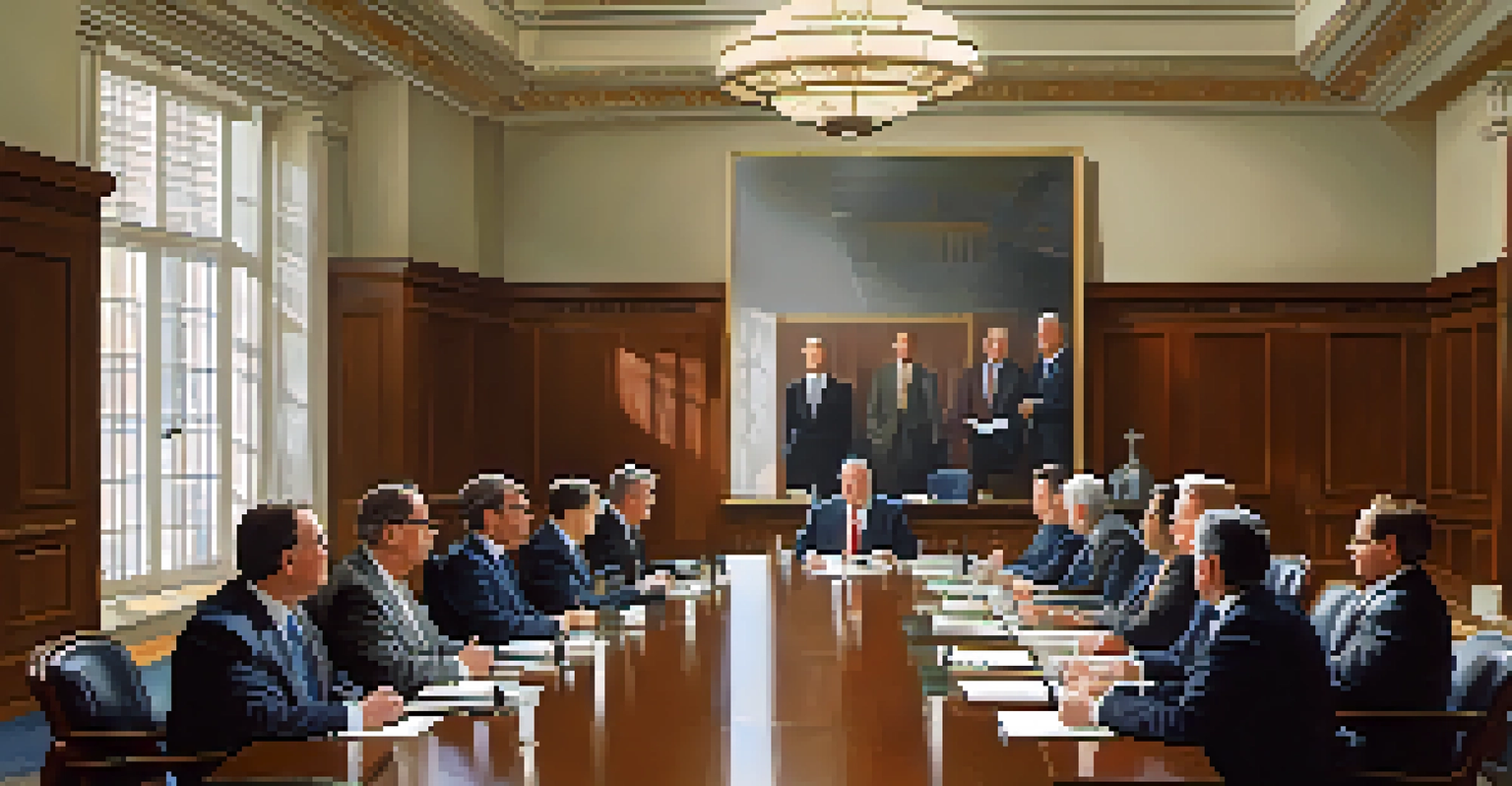Utah's Legislative Process: How Laws Are Made and Passed

Introduction to Utah's Legislative Framework
Utah's legislative process is a fascinating journey that transforms ideas into laws. The Utah State Legislature, comprised of the House of Representatives and the Senate, meets annually to discuss and pass legislation. Understanding how this process works can help citizens engage more effectively in their government.
The best way to predict the future is to create it.
The legislature is held in the Utah State Capitol, a beautiful building located in Salt Lake City. Each session typically runs for 45 days in odd-numbered years, with a shorter session of 30 days in even-numbered years. This time constraint adds urgency to discussions and decision-making.
Overall, the legislative framework sets the stage for how laws are proposed, debated, and ultimately passed, ensuring that various voices are heard in the lawmaking process.
How a Bill is Introduced in the Legislature
Every law begins as a bill, which can be proposed by legislators, the governor, or even the public. Once a bill is drafted, it needs to be introduced during a legislative session. This is typically done by a sponsor, who explains the bill's purpose to their peers.

After introduction, the bill is assigned to a committee for review. These committees consist of small groups of legislators who specialize in specific areas, such as education or health care. This specialization allows for more thorough examination and discussion.
Understanding Utah's Legislative Process
Utah's legislative framework involves a structured journey where ideas are transformed into laws through a collaborative process among legislators.
By the end of this stage, the committee may recommend the bill for further consideration or decide to table it, meaning it won't advance. This initial review is critical in determining whether a bill has enough support to continue.
The Committee Review Process Explained
Once a bill is in committee, it undergoes a detailed review where members discuss its merits and potential impacts. Public hearings may be held, allowing citizens to voice their opinions and share personal stories related to the bill's topic. This input is invaluable, as it helps legislators understand the real-world implications of their decisions.
A government that is afraid to trust its people is a government that is afraid of its people.
After discussions, the committee can make amendments to the bill, making it more effective or addressing concerns raised during hearings. These revisions are aimed at improving the bill before it goes to the full legislature for consideration.
Finally, the committee votes on whether to send the bill to the floor for debate. A 'yes' vote means the bill will progress, while a 'no' vote indicates that the committee believes it should not advance.
Floor Debate: The Heart of Lawmaking
Once a bill passes through the committee, it heads to the floor for debate among all legislators. This is where the bill is discussed in detail, with proponents and opponents presenting their arguments. The environment can be quite lively, reflecting the passion legislators have for their constituents and the issues at hand.
Debate is crucial because it allows for diverse viewpoints to be expressed. Legislators may propose further amendments, prompting additional discussions and negotiations to achieve consensus. This back-and-forth can lead to significant changes in the bill's wording and focus.
The Role of Committees in Legislation
Committees play a critical role in reviewing bills, allowing for detailed discussion and public input before the legislation advances.
Ultimately, a vote is taken at the end of the debate. If the majority of legislators support the bill, it will move forward to the other chamber of the legislature for similar scrutiny.
The Role of the Second Chamber in Lawmaking
In Utah, the legislative process consists of two chambers: the House of Representatives and the Senate. Once a bill passes one chamber, it is sent to the other for consideration. This bicameral system ensures that legislation is thoroughly vetted from multiple angles.
The second chamber will repeat the process of committee review and floor debate. If the bill is passed without changes, it goes to the governor. However, if amendments are made, the original chamber must review and approve these changes, leading to further discussions.
This back-and-forth can sometimes be lengthy, but it ultimately leads to more refined and effective legislation. The requirement for both chambers to agree on a bill helps ensure a broad consensus before a law is enacted.
Governor's Role: Final Approval of Legislation
After a bill passes both chambers, it reaches the governor's desk for final approval. The governor has several options: they can sign the bill into law, veto it, or allow it to become law without their signature. Each of these choices has different implications for the legislation's future.
If the governor vetoes the bill, it can still become law if two-thirds of both chambers vote to override the veto. This provision ensures that elected representatives can still enact legislation even if the governor disagrees.
Public Engagement is Vital
Active citizen participation in the legislative process ensures that elected officials remain accountable and that diverse perspectives are considered.
The governor's role is crucial in shaping laws, as their approval often reflects the values and priorities of the state's leadership. Understanding this step helps citizens appreciate the final phase of the legislative process.
The Importance of Public Engagement in Lawmaking
Public engagement plays a vital role in Utah's legislative process. Citizens can express their views on proposed legislation through emails, phone calls, and public hearings. This involvement ensures that elected officials remain accountable to their constituents.
Advocacy groups and organizations also work to influence the legislative process by raising awareness about specific issues. They often provide resources and information to help citizens understand the laws that affect their lives.

Ultimately, when citizens engage with their legislators, they help shape the laws that govern their communities. This active participation is essential for a healthy democracy and contributes to the overall effectiveness of the legislative process.